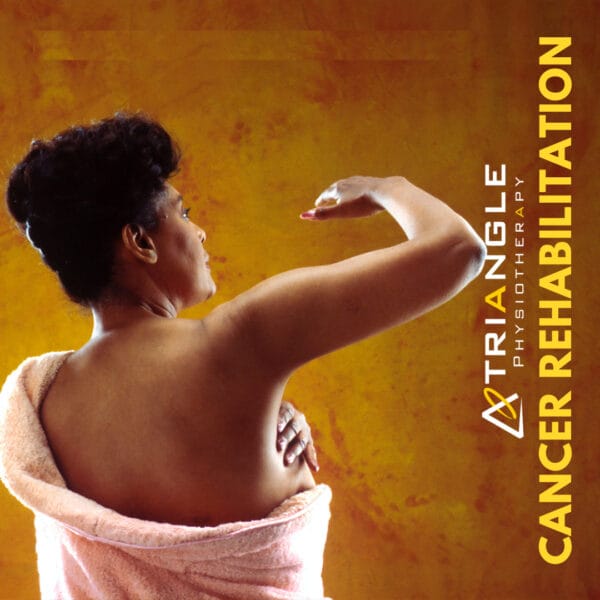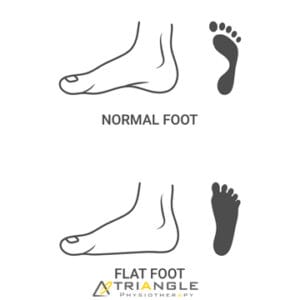After a breast cancer diagnosis, many women are left to face new challenges caused by the side effects of their cancer treatments. While some side effects tend to disappear on their own over time, many side effects can have long lasting physical and emotional consequences.

For instance, breast surgery, such as a mastectomy, lumpectomy and reconstruction, can cause many women to experience pain and physical limitations such as difficulty moving their arm, weakness, swelling and scar tightness. In addition, some women may also develop pathologies such as post-mastectomy pain syndrome and axillary web syndrome following surgery.
Furthermore, both chemotherapy and radiation therapy also have their side-effects, including fatigue, tingling and numbness in the hands/feet (chemotherapy-induced peripheral neuropathy), and radiation fibrosis, among many others.
These physical and psychological side effects of breast cancer treatments can significantly impact your daily functioning and independence both at home and at work. Research shows that both physiotherapy and exercise can help to alleviate many of these side effects and play an essential role in your recovery during and after breast cancer.
Benefits of Breast Cancer Rehabilitation
Physiotherapy interventions can help you to:
- Restore your arm movement
- Improve your shoulder, trunk and abdominal strength
- Decrease your pain
- Improve your flexibility
- Improve your energy and endurance
- Reduce your risk of developing lymphedema
- Improve your posture and body awareness
In addition exercise is also known to address many side effects, such as bone density issues related to hormonal medication, reducing your risk of developing lymphedema, improving cancer-related fatigue in addition to also reducing your risk of reoccurrence. Physiotherapists are exercise specialists who will work with you to provide a safe and effective exercise program.
Components of Breast Cancer Rehabilitation
Every woman undergoing breast cancer treatment is different and hence will have unique rehabilitation needs. Your physiotherapist will use a combination of treatment techniques best suited for your condition. Interventions may include:
- Manual (hands-on) techniques such as soft-tissue mobilization and myofascial release to improve your flexibility and manage conditions such as radiation fibrosis and axillary web syndrome.
- Scar Massage
- Exercises to improve your shoulder movement and strength
- Exercises to improve your endurance and overall energy levels
- Individualized education regarding risk reduction and early detection of lymphedema
- Energy conservation techniques
- Education on how to return to physical activity
- Home exercise program
What are the most common misconceptions about Breast Cancer Rehabilitation?
There is a common misconception that for months or years after breast cancer surgery or radiation therapy women should not use the arm on the affected side for lifting or working because they might get lymphedema or other problems. Research tells us this is FALSE, in fact with a proper physiotherapy program most women can achieve greater strength and function in the affected arm than what they had before surgery; with no increase in the chances of getting lymphedema.
Another misconception is that Breast Cancer Physiotherapy is the same as an exercise program. Physiotherapists are highly trained professionals able to independently diagnose and treat problems with pain or movement using a wide range of assessment methods and treatments, of which a specialized exercise program is one piece.
What does a typical session look like and how often do I need treatment?
Your Physiotherapist will conduct a thorough assessment of the issue. This will include asking questions about your cancer treatment and the problems you’re having, other relevant medical information, and questions about your goals for therapy. Your Physiotherapist will do a physical assessment of the problem which could include assessing movements, strength and fitness, scar tissue, nerve function, and/or injuries from radiation or surgery. Once this is completed, your Physiotherapist will clearly communicate all of their findings to you and describe their proposed treatment plan.
There is no one recipe for the number of treatment sessions or the length of time required for full recovery. Some conditions will require only a few sessions while others may require more intensive treatments and several sessions. Whatever your prognosis, your Physiotherapist will clearly communicate expected timelines with you.
At Triangle Physiotherapy, we are committed to helping women improve their health and well-being during each stage of their cancer recovery. Book your initial consultation here.




